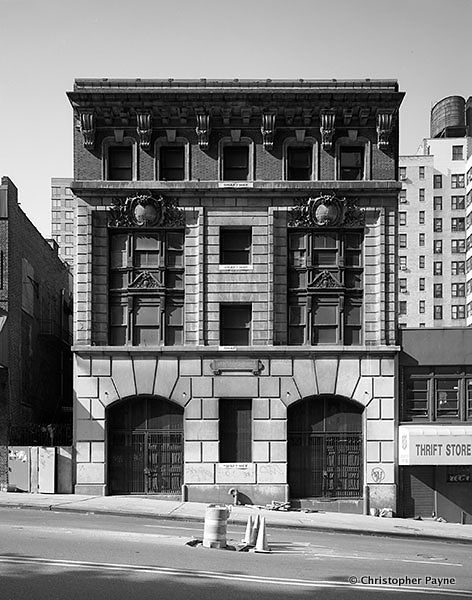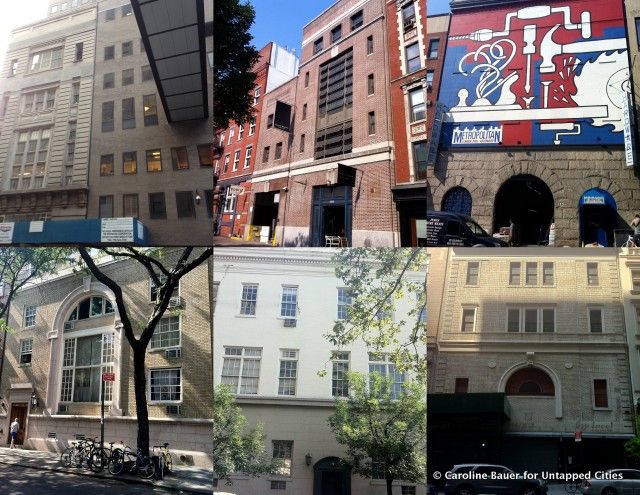100th Anniversary Great Nave Tour at the Cathedral of St. John the Divine
Celebrate the 1925 construction of the stunning nave inside the world's largest Gothic cathedral!


As New York City adapts to climate change and embraces alternative energy, many structures and spaces too must adapt to meet new demands and avoid becoming obsolete. The High Line is a shining example of how unplanned obsolescence can inspire imaginative and practical use of a discarded structure.
 281 West 96th Street from Christopher Payne’s book, New York’s Forgotten Substations: The Power Behind the Subway (2002). The property is currently vacant.
281 West 96th Street from Christopher Payne’s book, New York’s Forgotten Substations: The Power Behind the Subway (2002). The property is currently vacant.
A less celebrated story of urban resilience is found in the former power substations of the MTA. From 1881 to 1999, subway trains were powered via a series of electricity hubs scattered throughout the city. The large, manually operated machines that transferred power from plants to subway lines were housed in “substations.” These structures are truly an example of purpose driven design- the layout of each was dictated by the machines inside. Much like early 20th century factories, the stations constructed at this time featured large windows across the front and roof to maximize daylight exposure. These requirements gave each of the stations a very distinct look and footprint; once you know what to look for, you will begin to see these buildings throughout Manhattan, Queens, Brooklyn and the Bronx.
In 1997, photographer Christopher Payne walked by Substation 21 in on his way to his Brooklyn Heights home. Though he passed by the building on Willow Street on a regular basis, he felt compelled to peer through the open front gates on that particular day. To his surprise, he saw a crew of men working on a slew of antiqued machines. Payne describes the scene as something that belonged in at the turn of the 20th rather than 21st century, and made him wonder “how is it that something so industrial exists in the middle of a typical city block, next to an apartment or a glass office building?” The experience piqued his interest as an industrial photographer who documents industrial ruins and vanishing building typologies. As Payne stumbled across Substation 21 right as the MTA was converting the subway power system, he was able to document the substations during their transition into obsolescence. His book, New York’s Forgotten Substations: The Power Behind the Subway (2002), beautifully documents the structures both through photographs and in narrative.
Given his love of the industrial, Payne described the process of watching the substations being “completely gutted” as painful: “they were tearing apart something that should have been in a museum. Not to be overly sentimental, but every time I saw one being demolished, I felt like I was losing a friend.” While the machinery was removed in each station, the structures were left standing, As space is scarce in NYC, many of the buildings have been renovated to become residential, retail and even industrial buildings. However, a leopard cannot change its spots. Despite being repurposed, the substations retain their signature aesthetic.

From top left corner:
155 East 60th Street: Bloomingdale’s HR Department
204 Elizabeth Street: Erica Tanov retail space
175 Spring Street: Metropolitan Lumber
39 Jane Street: Condos
30 Horatio Street: Apartment complex
51 Park Place: Previously a Burlington Coat Factory, the property is now part of the contested 9/11 memorial mosque proposal
Payne attributes his knowledge of the stations to Robert Lobenstein, a retired New York City Transit General Superintendent and unofficial historian of the city’s subway system. Lobenstein and his friend Joseph Cunningham have painstakingly documented the evolution of these substations from 1881 to present day. In partnership with the New York City Transit Museum, Lobenstein leads “Substation Safaris,” or tours of stations throughout the city. The next tour on the docket is at the 46 Cliff Street Substation, near South Street Seaport on July 7th (click here to reserve tickets).
Subscribe to our newsletter